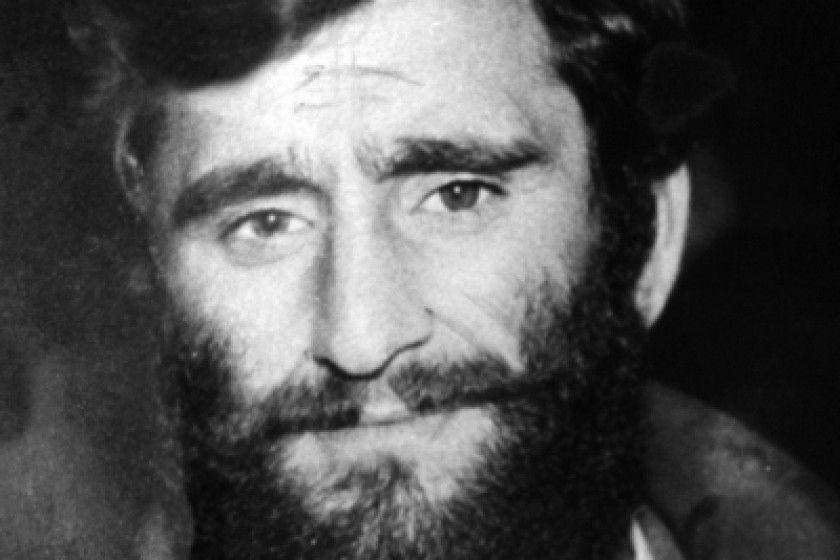
Gusan (the Bard): Fallen Artsakh Freedom Fighter Known for His Songs and Poetry
Native of Vardenik is Remembered by Family and Friends
"As a guy who had been to Afghanistan, who was experienced, Gusan was easy to get along with. The rest of us liked guys like Gusan. When you're going into battle you just can't give orders left and right, let alone carry them out. How can you just tell someone to, 'go and sacrifice yourself?' Only the government has the right to order such a thing. But when there is no national army you can lead by example. That's why all the guys wanted to go to the front with Gusan. They knew Gusan wouldn't leave anyone behind on the battlefield; that he wouldn't retreat. They felt safe with him knowing that he would look out for you till his last breath. Gusan was more tight-lipped and curt with his close buddies than with others, even though he was truly an artist deep down, with his feelings. He wouldn't hide his emotions, whether positive or negative. That's why many of the commanders feared him; Gusan had nothing to hide or be ashamed of."
This is how Argady Sahakyan, commander of the "Tigran Metz" Militia Reconnaissance Unit remembers his friend and comrade in arms, Gusan.
Friendships forged after Spitak earthquake
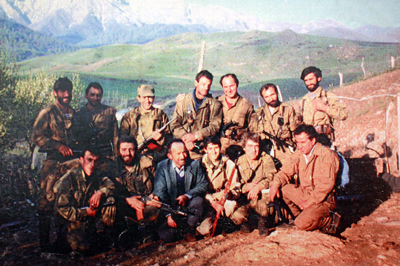
Argady pointed out that he would occasionally bump into Gusan (Artak Ohanyan) at the Opera Square back in 1988, but that he got to know him better later, in the Spite earthquake zone. Argady says that the guys who volunteered to help out after the devastating earthquake hit Armenia, later found their way to the Karabakh War. He says that the prime units and friendships were cemented during the aftermath of the quake and not in Opera Square.
Gusan was born in 1962 in the Martuni village of Vardenik. He served with the Soviet army in Afghanistan and was wounded. From 1982-1988, Gusan worked as a driver for the Martuni Regional Center.
In 1990, Gusan joined up with the "Tigran Metz" militia unit and participated in the defense of Shahumian region of northern Artsakh. In the spring of1991, he defended the village of Get ashen and helped evacuate the Armenian residents to safety when the infamous "Ring Operation", encircling the village, was carried out by Soviet and Azerbaijani troops. Gusan went on to participate in the battles liberating Lachin and Karvatchar. He fell on the battlefield in the spring of 1993. His remains are buried at the "Yerablur" military cemetery outside Yerevan.
We nicknamed him Gusan
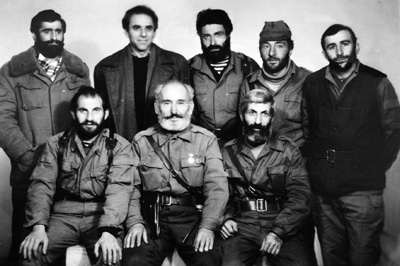 The guys nicknamed Artak Ohanyan "Gusan" for his poetry and songs. (The word translates into 'bard'). Argady says that Gusan's best and most important song is "Awaken Masis, Armenians are coming".
The guys nicknamed Artak Ohanyan "Gusan" for his poetry and songs. (The word translates into 'bard'). Argady says that Gusan's best and most important song is "Awaken Masis, Armenians are coming".
The two were together in the war until April, 1991, when Argady was wounded. After recuperating, the two reunited.
Gusan would always say "No one next to me has ever been killed in battle." Zhanna Sahakyan, Gusan's widow and Argady's sister, say that the Azerbaijanis always had the impression that Gusan was a giant of a man and when they actually saw him up close they couldn't believe he was small in stature. "When he went to Karmir he weighed 60 kilos; when he came back he had shrunk to 40," says Zhanna.
No one in the building where he lived ever saw Gusan wearing a military uniform. He'd always change into civvies before arriving in Yerevan. He believed that military duds were for the battlefield.
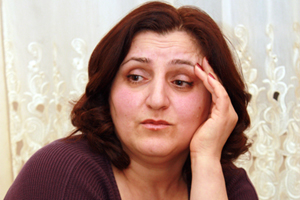 Zhanna said that Gusan only once fired his gun into the air in town. That was when he saw a boy rip the earrings off a girl and run away down the street. Argady Sahakayn says the Gusan lived by the rule where one had to be punished for wrongdoing and rewarded for doing the right thing. But that it had to be done then and there.
Zhanna said that Gusan only once fired his gun into the air in town. That was when he saw a boy rip the earrings off a girl and run away down the street. Argady Sahakayn says the Gusan lived by the rule where one had to be punished for wrongdoing and rewarded for doing the right thing. But that it had to be done then and there.
Incident at the Defense Ministry
"We were at the Defense Ministry. We had sent cars to fill up with gas in order to go to Goris. They didn't fill up all the way. Gusan wasn't one to hold back. He had to point out the mistake on the spot. 'What are you guys playing at? Fill up the tanks all the way,' Gusan yelled. An argument and shoving resulted. He slapped two of them and the rest started to hit Gusan. I was in a hurry when the phone rang. 'Come quick, they're beating Gusan at the ministry.' When I arrived the place was packed. All the guys from different units were there. I yelled out, 'You rats. How dare you raise a hand to a guy who's fought on the battlefield?' They all realized that if Gusan had quarreled with someone there it was for a good cause. He wasn't the kind of guy to shortchange anyone out of a half liter of gas," Argady relates.
Gusan was killed on September 9, 1993 in the Ghubatli region. Argady says that Gusan had already finished his mission and had left his position and had reached Khndzoresk. On that fateful day, Gusan shouldn't have gone towards Ghubatli.
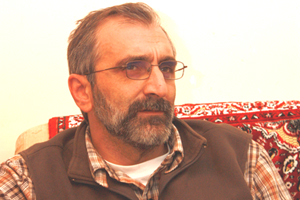 "As a commander, he had positioned the entire detachment. They came and told him that a few of the men, Sano, Garik and Vardan, had vanished. So Gusan gets up, rounds up some experienced fighters, and sets out after those missing. At that time there were many units available but he decides to head off. But the Turks already had sent out a diversionary squad; it was too late," says Argady Sahakyan.
"As a commander, he had positioned the entire detachment. They came and told him that a few of the men, Sano, Garik and Vardan, had vanished. So Gusan gets up, rounds up some experienced fighters, and sets out after those missing. At that time there were many units available but he decides to head off. But the Turks already had sent out a diversionary squad; it was too late," says Argady Sahakyan.
Those who profit today have no connection with the Artsakh struggle
Argady says that in every movement they are those who participate involuntarily and those who are dedicated to the cause; those for whom the liberation struggle is like living and breathing, their mission in life. Sadly, 90% of the dedicated ones never returned.
"Now, everyone becomes a hero. And we never saw these guys out in the field. He and others like him were back safely in the rear when our dedicated guys were in the thick of things. We'd joke about these guys and call them 'tomato delivery boys'. When men fight, you also need people bringing up provisions to the front. One guy does the fighting and there are 10 bringing up provisions. These 'tomato deliverers' later became ministers, deputies, government big-shots. And they all had military records; complete with the alleged engagements they participated in, written up by headquarters. We had jotted down Gusan's record when they wanted to decorate him. But it never crossed our minds that Gusan should have an official record. It was war; you fought. When you read Gusan's official record and the one we wrote, you see that theirs is ten times more embellished. Nothing has changed from the French Revolution to ours. It's the ones with brains who think up revolutions and the fanatics carry it out. The nobody's, the dregs, are the ones who reap the benefits. The same happened in 1988. A few inspired the national reawakening, those dedicated guys carried it out and paid with their lives, but the ones who have benefited had no connection whatsoever with the struggle," argued Argady Sahakyan.
In 1992, Gusan convinced his wife to come and live in Shushi.
"It was May 9, 1992, Gusan was all exuberant and in high spirits. He said that Shushi had been liberated. I replied, 'what do you mean. What business is it of yours?' He answered, 'We were helping them from the air.' I accidentally found out that he was no longer at headquarters. Exactly one month before our child was born we came and said, 'I have to go.' He would leave the house in the morning and come back at night. 'I'm still in Yerevan. I haven't gone anywhere,' he'd say. We later found out that he was deceiving us. In 1992 Gusan was in the village of Karmir. There was a public phone there. I called up the regional center and requested that they tell Gusan to call us when he came back. He never called in three months. When he returned I got angry and asked why he never called. He said that he had gone to fight, not to make phone calls and that he never had the time. Gusan returned from Shahumian when our daughter Tatevik was already four months old. He had been away for one and a half months. With a very serious face he said, 'What have you done with me. Before I would leave and never give anything a second thought. Now, if I get a few minutes to myself, I worry about you and the child.' He was very reserved when it came to showing his emotions. What was there to say to him," says Zhanna.
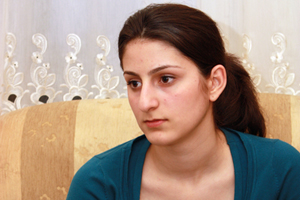 Today, their daughter Tatevik is 17 and a student at State Economics University.
Today, their daughter Tatevik is 17 and a student at State Economics University.
Sculpture of Gusan to adorn school in Vardenik where he studied
Painter and sculptor Aghvan Mkhitaryan is working on a sculpture of Gusan to be placed in front of High School #3 in Vardenik. Aghvan is using the face of Tatevik is create a likeness of her father, Gusan. This is the school were the slain freedom-fighter studied from 1969-1979.
In 2000, Gusan was posthumously awarded the "Medal of Bravery" "The awards ceremony took place in the Chamber Music Hall. Gusan's was the first name they called out. They entire auditorium broke out in applause. Gusan was finally being recognized seven years after his death," says Zhanna.
"At least they've gotten around to acknowledging those who were killed. But what about those who fought and survived? No one remembers them now," she added. Argady Sahakyan notes that little if any literature has been written regarding the five year war. What little that has been published merely includes photos of the men who fought and some biographical notes.
"This war was the only one in living memory when Armenians actually won on the battlefield. Sardarabad and Bash-Abaran were life and death struggles; either you defeated the enemy or were destroyed. It wasn't a question of victory then. In Artsakh, however, Armenians for the first time actually were victorious in war," argues Argady Sahakyan.
 Videos
Videos Photos
Photos
Write a comment